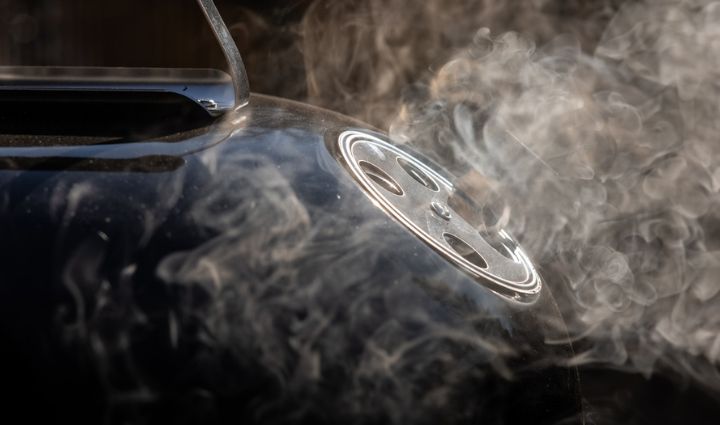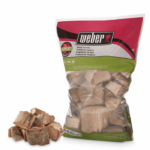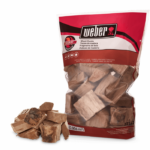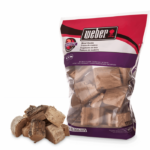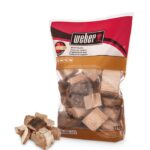When it comes to smoking meat, maintaining a steady temperature is key to producing succulent, melt-in-your-mouth meat with an irresistible flavor. Big fluctuations in temperature can tighten and dry out what you’re cooking.
If your smoker temperature fluctuates too much, it can affect both the taste and texture of your food—leaving you with dry, tough meat or an uneven cook. That’s why learning how to regulate temperature in a smoker is one of the most important skills for any beginner.
Pellet smokers are popular because they have built-in temperature control systems that make them easy to manage. However, they don’t always provide the best smoke flavor, and you have less control over the type of fuel you use. On the other hand, charcoal and wood smokers give you full control over your fuel, allowing for rich, smoky flavors—but they also require more effort to maintain the right temperature.
Mastering temperature control in a charcoal or wood smoker takes time and practice, but with the proper techniques, you can keep your smoker running at a steady heat. Deciding whether to keep your smoker vents open or closed, or use a water pan, this guide will help you dial in your temperature to smoke meat like a pro. We’ll cover:
- Understanding how your smoker vents work
- Three key elements of temperature control
- How to regulate temperature in a smoker
- More tips for regulating temperature in a smoker
Let’s get smoking!
Understanding Smoker Vents: Position and Purpose
One of the most important aspects of learning how to regulate temperature in a smoker is understanding how your air vents work. Your smoker will have two vents, each playing a crucial role in maintaining airflow and temperature control:
- Bottom vent (AKA intake damper): Located near the firebox, this vent controls the amount of oxygen entering the smoker. More oxygen fuels the fire and increases the temperature, while less oxygen slows the burn and lowers the heat.
- Top vent (AKA exhaust damper): Found at the top of the smoker, this vent creates a draft that pulls air through the smoker and allows combustion gases and smoke to escape.
For efficient smoking, both vents should be at least partially open at all times. If the top vent is fully closed, smoke and combustion gases will get trapped, potentially smothering your fire and creating a bitter taste from excess creosote buildup. If the bottom vent is fully closed, the fire won’t receive fresh oxygen, causing it to die out.
When both vents are open, air can flow freely, increasing the fire’s intensity and raising the smoker’s temperature. As the bottom vent allows more oxygen, the fire will burn hotter. The draft effect created by the top vent will also pull more air through, further boosting heat levels. This effect is most noticeable when starting your fire—keeping both vents wide open helps the smoker reach its target temperature faster.
Comment
byu/discowithmyself from discussion
insmoking
GRILL SPOT TIP: It’s a myth that closing both vents means more smoke flavor. Keeping the vents open allows the smoke to move over your meat, swirl around in the firebox, and then exit the cooking chamber to be replaced by fresh smoke.
Three Key Elements of Temperature Control
To successfully regulate temperature in a smoker, you need to manage three crucial elements: airflow, fire temperature, and smoke consistency. Each plays a role in maintaining steady heat and achieving the perfect smoky flavor.
Watch our video to learn more about the three key elements of temperature control (or keep reading for a more detailed guide):
1. Airflow
Adjusting your smoker vents will increase or decrease airflow and your smoker temperature. Since every smoker reacts differently, finding the best vent positions for your setup takes some trial and error.
If you’re just starting with smoking and are wondering whether to keep your smoker vents open or closed, the general rule is that both vents should be at least partially open to allow proper airflow.
- Start with the top vent (exhaust damper) at least halfway open and the intake vent (bottom damper) about ¼ open. These settings may need to be adjusted based on your smoker and outdoor conditions.
- If you need more heat, open the bottom vent slightly to allow more oxygen. If your smoker is getting too hot, partially close the bottom vent to slow the fire.
2. Fire temperature
Keeping a steady temperature in your smoker starts with a well-managed fire.
Understanding how fuel burns and how air circulation affects heat levels will help you avoid extreme temperature fluctuations. So before you start planning long smokes with expensive cuts of meat, take some time to learn how much charcoal or wood you need to light to maintain a consistent, even temperature.
Keep these tips in mind for managing your fire temperature:
- If the temperature drops and your coals start to die out, open the intake vent slightly to increase airflow and reignite the fire.
- If your fire is burning too hot, restrict the airflow by closing the intake damper slightly.
If your smoker tends to run too hot, start with less charcoal (around ⅓-½ of a chimney) instead of piling on too much fuel at once. For extended cooks, add fuel gradually—don’t dump in 16 hours worth of charcoal at once or you’ll struggle to maintain the right heat level.
3. Smoke consistency
The quality of your smoke is just as important as managing your fire and airflow. Ideally, you want thin, blueish smoke—not thick white smoke, which can create a bitter taste.
Here are some tips for perfecting your smoke:
- Proper airflow plays a role in smoke consistency—too little oxygen can create thick, stale smoke, while proper ventilation ensures clean, flavorful smoke. If your smoke is too thick, open the dampers.
- If you’re using wood chunks, consider pre-burning them outside the firebox for a few minutes. Once the initial burst of white smoke dissipates, you can use long-handled tongs and heat-resistant gloves to safely add the wood chunks to your fire.
How to Regulate Temperature in a Smoker
Now that you understand the key elements, you can master regulating temperature in a smoker. While there’s no one-size-fits-all approach, understanding the fundamentals of vent control and heat management will help you maintain a steady temperature for the perfect cook.
There are three factors to consider when it comes to regulating temperature:
- Your smoker vents/dampers
- The weather conditions
- Using a water pan
1. Adjusting the vents
Your smoker’s vents are your primary tool for regulating heat. But should you keep your smoker vents open or closed? The answer depends on the temperature you’re trying to maintain.
The bottom vent acts as a crude regulator, controlling how much oxygen reaches the fire. The top vent, on the other hand, is for fine-tuning and ensures proper airflow. That means:
- If your fire is too cold, open the vents slightly to increase airflow and heat.
- If your fire is too hot, nearly close the top vent to slow the draft and reduce the temperature.
- If you see too much thick smoke, it may indicate poor airflow—open the vents slightly to clear it out.
There’s no strict rule for how much each vent should be opened or closed. It depends entirely on your individual smoker. If you’re new to smoking, try this experiment:
- Start with the bottom vent closed and the top fully open for 5 minutes. Observe the temperature.
- Close the top vent by ¼, wait a few minutes, and note how the temperature changes.
- Repeat this process in ¼ increments to see how different vent settings affect heat levels.
Only change one variable at a time to pinpoint what impacts the temperature. This will help you develop a better feel for your smoker’s behavior.
GRILL SPOT TIP: If you notice temperature fluctuations, make small changes to the intake vent instead of closing the exhaust vent completely.
2. Adapting to weather conditions
Weather conditions also play a huge role in smoker temperature control.
- On hot or windy days, close the intake damper slightly to prevent the fire from burning too hot.
- On cold days, open the intake damper more to let in additional oxygen and keep the fire burning strong.
- Humidity levels can also impact heat retention, making it important to observe how your smoker reacts under different conditions.
3. Using a water bath
A water bath is simply a foil tray full of water placed somewhere within your smoking chamber. It can help regulate smoker temperature by adding humidity and acting as a thermal buffer. If the fire cools down, the stored heat in the water will help to maintain a consistent temperature. If the fire gets too hot, the water will absorb excess heat and smooth out any sudden temperature spikes.
For best results, place the water pan opposite the coals to balance heat distribution.
GRILL SPOT TIP: Bricks can also act as a heat buffer by absorbing and radiating heat. If you’re using a dedicated smoker (not a charcoal grill), consider placing bricks inside to help stabilize the temperature.
More Tips for Regulating Temperature in a Smoker
Now that you understand the key aspects of regulating temperature in a smoker, here are some extra tips to help you fine-tune your technique and maintain steady heat throughout your cook.
- Clean your smoker: Ash buildup can block airflow. Regular maintenance and cleaning is essential for regulating smoker temperature.
- Keep the lid closed: Follow the golden rule: “If you’re looking, you aren’t cooking.” Every time you open the lid, you release valuable heat and smoke, leading to fluctuations in temperature. Only open the lid when absolutely necessary—to flip meat, check the fuel, or refill the water pan.
- Use a reliable thermometer: The built-in dome thermometers on smokers are often inaccurate. Instead of relying on the built-in thermometer, invest in a quality digital probe thermometer to monitor the temperature inside the smoker and at the grill level where your meat is cooking.
- Adjust gradually: Temperature changes take time, so resist the urge to open or close vents drastically. If your smoker is climbing too quickly toward your target temp, close the intake damper slightly before overshooting. It’s much easier to slow down temperature increases than it is to bring a smoker back down after it gets too hot.
- Controlling smoke for long cooks: For long smoking sessions, you don’t need to apply smoke the entire time. Excessive smoke can actually make the flavor too strong or even acrid. Once you’ve built a solid smoke flavor, consider removing your smoke fuel and closing the exhaust vent slightly to reduce airflow and finish cooking your meat to a safe internal temperature.
- Keep a backup fuel supply handy for long smokes: Always have a lit chimney of charcoal ready for long smokes. This allows you to add fresh fuel without waiting for new coals to light, preventing temperature drops.
Mastering How to Regulate Temperature in a Smoker
By understanding how to adjust your smoker dampers to manage airflow and maintain consistent fuel levels, you can keep your smoker at the ideal temperature for low-and-slow cooking.
Whether you’re fine-tuning your smoker vents, experimenting with different vent positions, or using a water pan to stabilize heat, small adjustments make a big difference. Remember to make gradual changes, keep your lid closed, and use a reliable thermometer to accurately track your smoker’s temperature.
With practice and patience, you’ll develop a feel for your smoker and be able to maintain steady heat with ease.
Shop for wood chunks:
Sources
- “7 Tips on How To Control the Temperature of your Smoker“. Leroy Hite. April 2, 2019. Cuttingedgefirewood.com.
- “10 Tips to Get the Most out of Your Electric Smoker“. Joe Clements. March 17, 2018. Smokedbbqsource.com.
- “How to Control the Temperature of a Smoker“. Mark Nichols. May 23, 2024. Wikihow.com.
- “How to Control Temperature in a Smoker“. Bearded Butcher Blend Seasoning Co. March 30, 2023. Beardedbutchers.com.
- “Smoker Temperature Control Using Air Vents“. Barbecue-smoker-recipes.com.
- “Smoker Vents Open Or Closed? (Always Open!)“. Meltodalton.com.
- “Top Ten Tips for Smoking“. Jamie Purviance, used with permission. Weber.com.

